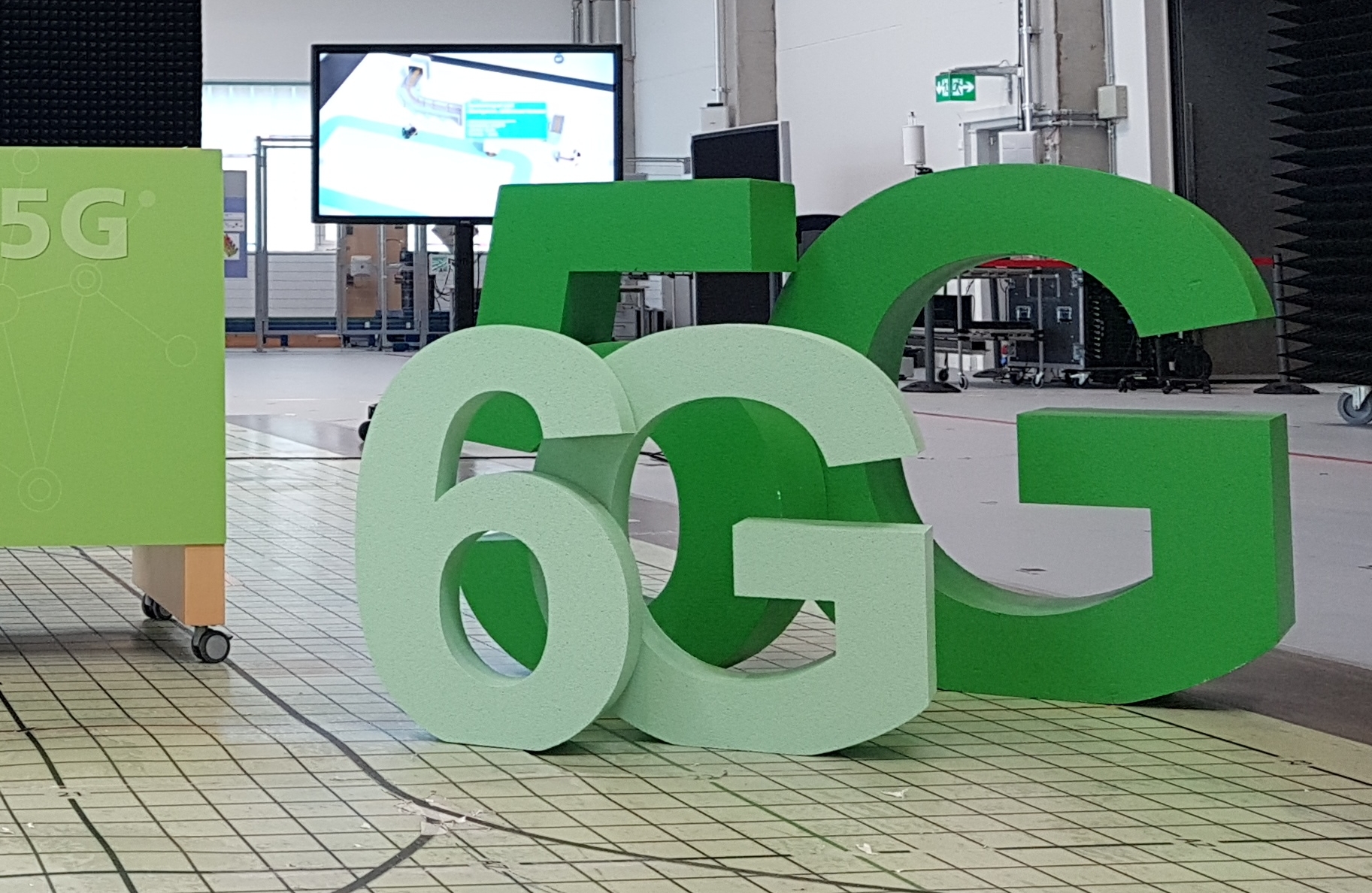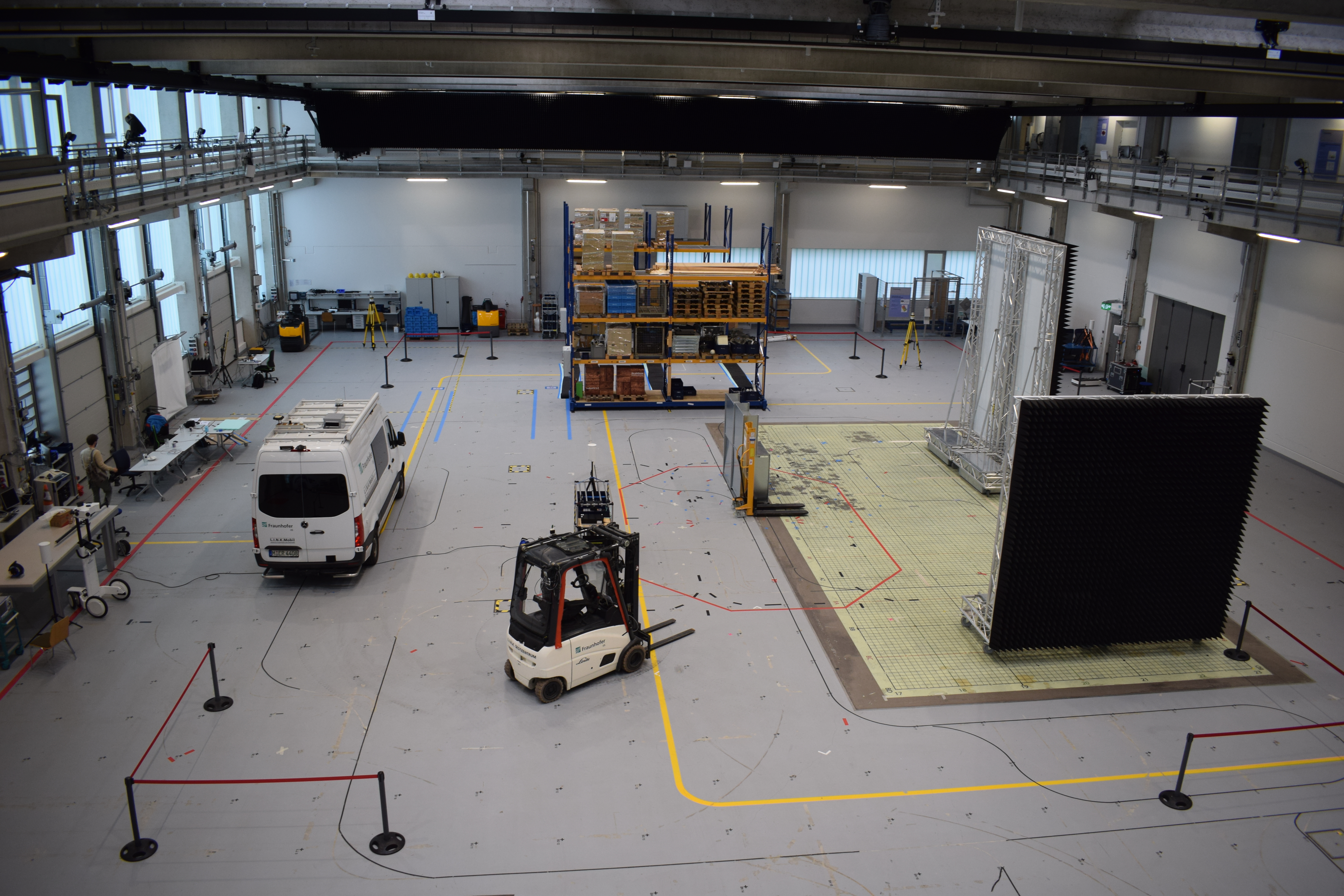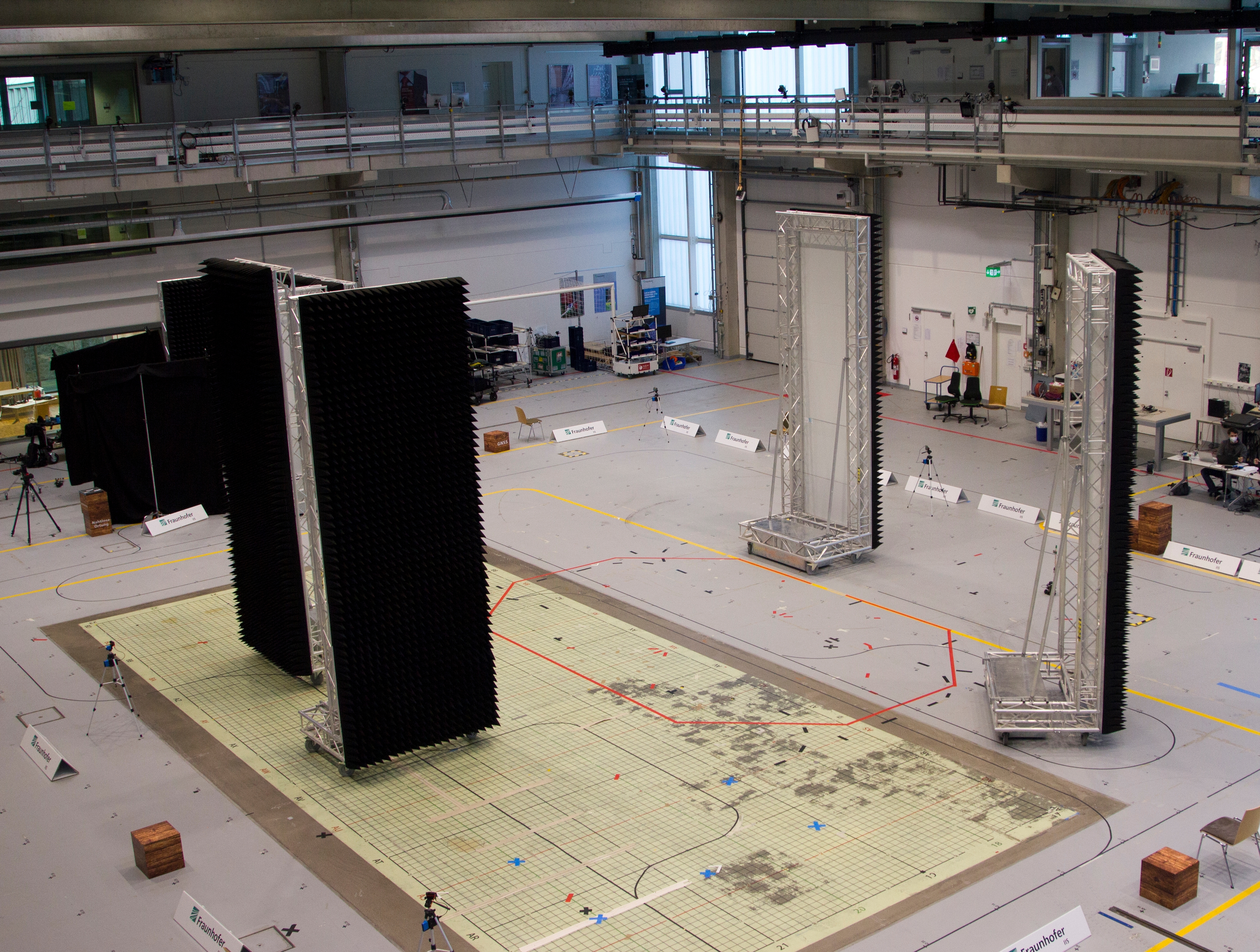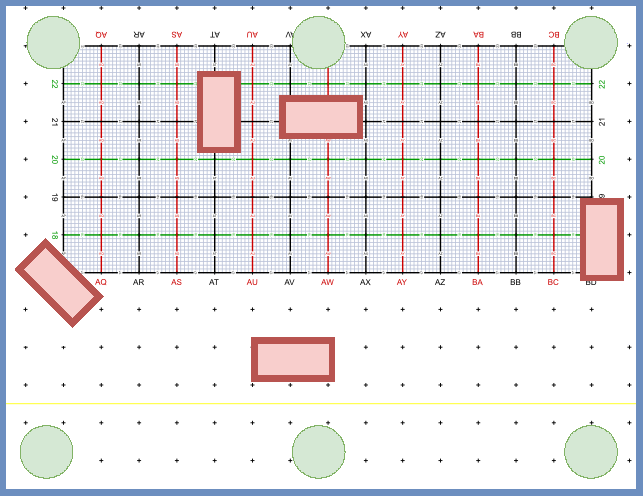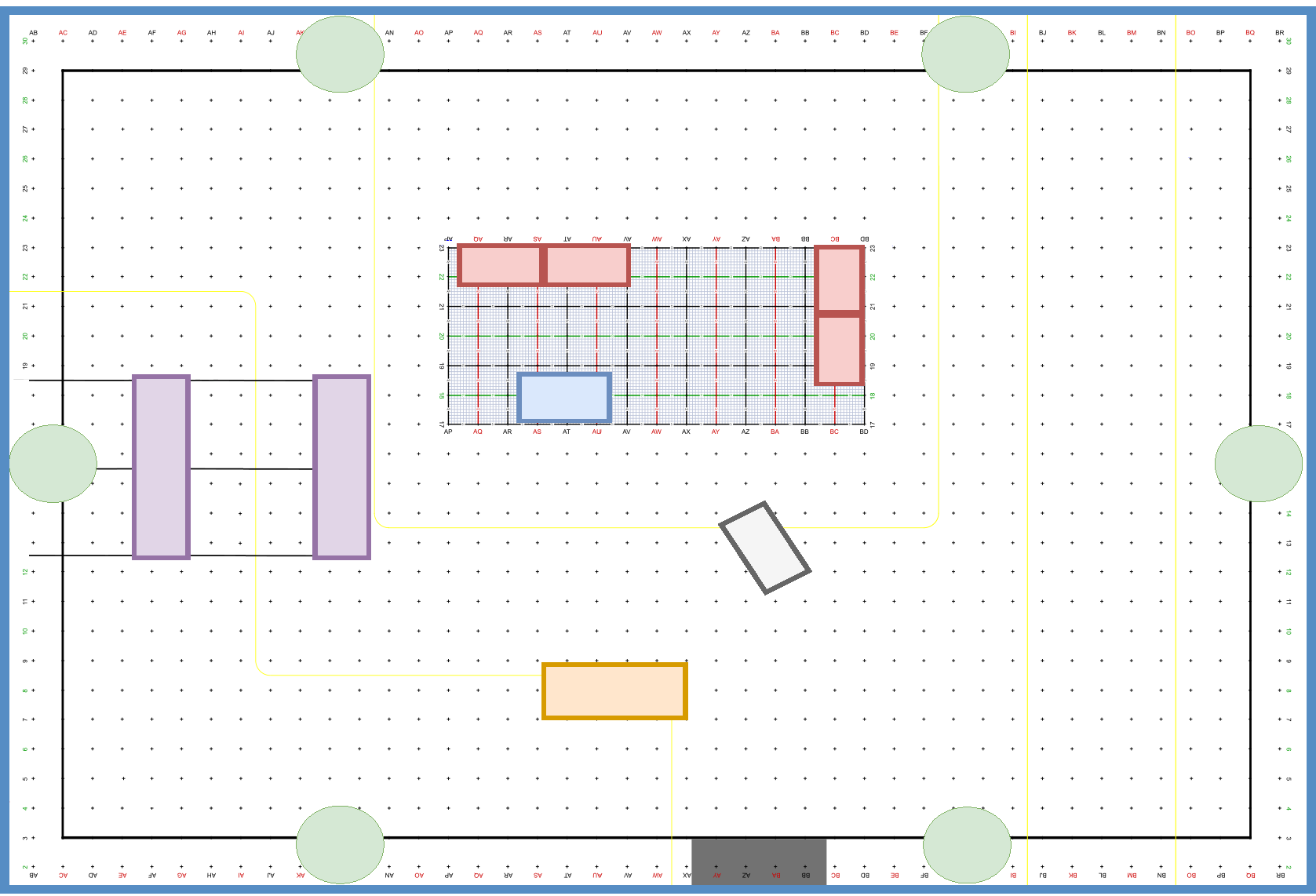Data acquisition
We recorded two different data sets: a training data set and a test data set, where one burst includes the six synchronized channel impulse responses (CIRs) and time-of-flight (ToF) measurements. Both data sets were recorded independently on different trajectories within the same area. We designed a complex indoor environment with walls, that reflect radio signals on the inner side (iron surface) and absorb them at the outside (black surface). The transceivers, indicated as green dots, are placed at the edges of the recording area. The walls, indicated in red, are placed to block the line-of-sight (LoS) between the anchors and the robot platform, which causes ranging errors of the UWB radio system leading to high localization errors using classical positioning approaches.
Sensors
Hardware
For data recording we used the Wismit platform, which can be used for the evaluation of different positioning technologies. For ultra-wideband (UWB) localization the Decwave DW1000 is utilized. We configured the system for ToF acquisition as a two-way ranging setup with a bandwidth of 499.2 MHz at a center frequency of 4 GHz with a recording frequency of 3 Hz.
Sensor data
The sensors raw data is provided including ToF measurements and the corresponding CIRs. The data format is HDF5 with the following columns:
A_ID: Unique identifier for the stationary transceiver module
B_ID: Unique identifier of the burst
TD: Estimated ToF of the UWB module
TD_OFFSET: Relative ToA within the window of the CIR
CIR_R: Real part of the CIR
CIR_I: Imaginary part of the CIR
POS_X: X-coordinate of the ground truth position
POS_Y: Y- coordinate of the ground truth position
